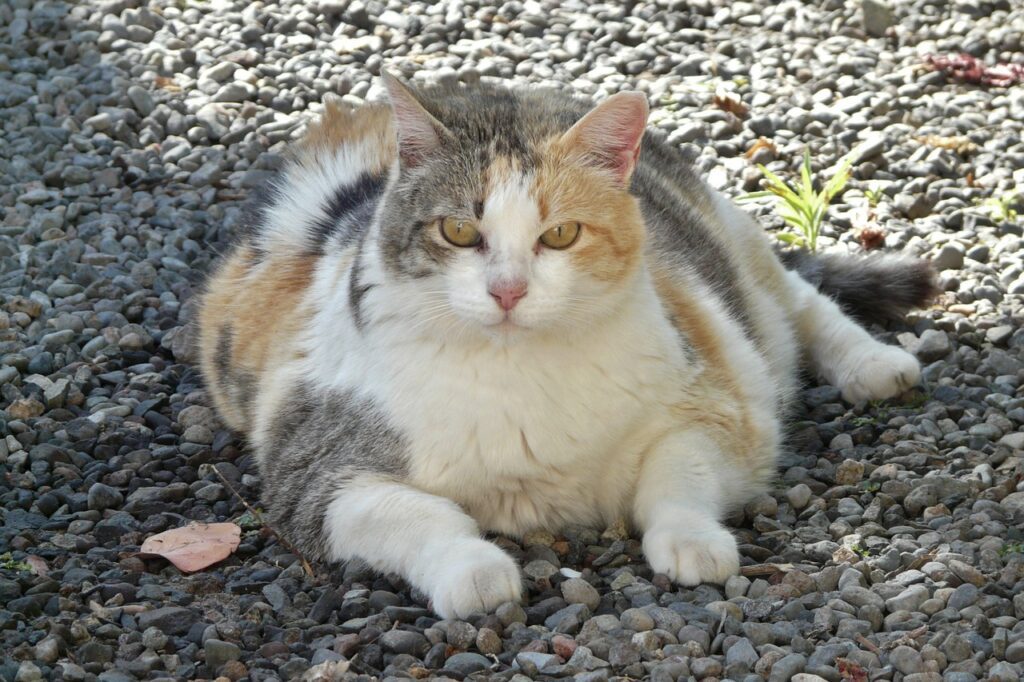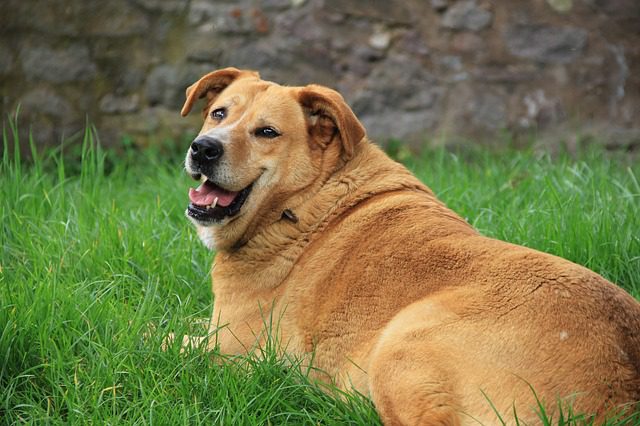
by Kerry McKinney, DVM
January often brings resolutions to improve our health and the usual plans to eat better, exercise more, and shed some pounds. Statistics show many of our family pets could use more exercise and some slimming down, too.
The Association for Pet Obesity Prevention, which is an excellent resource for healthy weight maintenance, found in 2017 that 60 percent of cats and 56 percent of dogs were either overweight or obese. One study concluded that the recommended feeding amount on most food bags was 25-30% too much for the average neutered dog. Yikes! But it makes sense that food manufactures want to sell their product, right? You might be shocked at common pet treat calorie counts.
We sometimes joke about our cats being “fluffy” and our dogs “under-tall,” but extra weight comes with some serious health risks.
Risks of obesity in pets
- Diabetes
- Arthritis (obesity can increase the likelihood of degenerative joint disease from 10% to 75%)
- Orthopedic injuries like torn anterior crucial ligaments and aggravation of hip dysplasia
- High blood pressure can damage kidneys and cause blindness due to retinal detachment
- Kidney disease
- Heart disease
- Difficulty breathing
- Cancer and inflammatory diseases
- Decreased life span and poorer quality of life
How to tell if your pet is overweight
- Check for a waist. Viewed from above, the ribcage should be the widest part of your pet.
- Check for a “tuck up.” Viewed from the side, the bottom line of your pet should rise from the chest back.
- Use your hands. Feel over your pet’s rib cage. Each rib should be easily felt under a layer of skin; similar to the way your knuckles feel when your hand is flat. If the ribs feel more like the palm side of your hand, that’s extra weight. On the off chance the ribs feel more like your knuckles when you make a fist, it’s okay to increase the calories a bit.
- Ask your veterinarian for an honest assessment and feel free to stop in for a monthly weigh-in.
For an overweight pet, the goal is very gradual weight loss, which means 6-9 months for a dog and 9-12 months for a cat. If you think your pet is overweight, consult your veterinarian to assess health status and ensure a safe weight loss plan. Rapid weight loss can cause serious metabolic disease or death.
How much to feed
For an overweight pet, the simple answer is “less.”
If you want to do the math, multiply your pet’s weight in kilograms by 30 and then add 70, you’ll have a baseline number of kilocalories (kcals) per day to feed to maintain that weight. Decrease this number by 10-20% to promote weight loss.
If you can’t face a calculator, try this link which covers daily pet caloric needs.

Keep in mind that canned foods have fewer calories per bite than dry kibble—think watermelon vs. pound cake. Check the label of your food for the amount of kcals in each cup or can or ounce, then do more math to determine how much to feed. Then guesstimate and divide that amount into 2 or 3 meals/day.
Say “Yes!” to exercise
For dogs, a brisk (as in minus the sniff-breaks every few feet) walk for 20-30 minutes a day will help burn some calories. He may initially be shocked at the pace and lack of nose time, so keep a close lead and encouraging voice as you head out and consider a more leisurely nose-satisfying pace on the way back. Remember to skip the treat or substitute a low calorie option like a small bite of carrot or frozen green bean when you get home.
For most cats, a brisk leash walk is out of the question. Get them moving with a laser pointer, feather toys, flash lights, or squeaky mice; ten minutes twice a day is a good goal. Remember it’s a cat and you may need to mix it up, as what’s interesting one day may be boring the next.
For both cats and dogs, get them hunting. Move the food dish upstairs and downstairs and back again, and consider food puzzles. Instead or rewarding with food, substitute affection, fresh water, or a game.
Remember monthly weigh-ins and if you’re not gaining on losing within 30-60 days, change it up or do some exploring. Successful dieting for our pets needs to be a family effort; if your toddler is sharing PB&Js or Gram is sneaking the cat tuna treats, it’s going to be tough.
Consult your veterinarian and the links above for additional tips on diets, healthy food choices, and safe weight loss.
Recent Posts
About Us
Ann Arbor Animal Hospital is a locally-owned animal hospital operating for over 90 years in Ann Arbor, MI.
